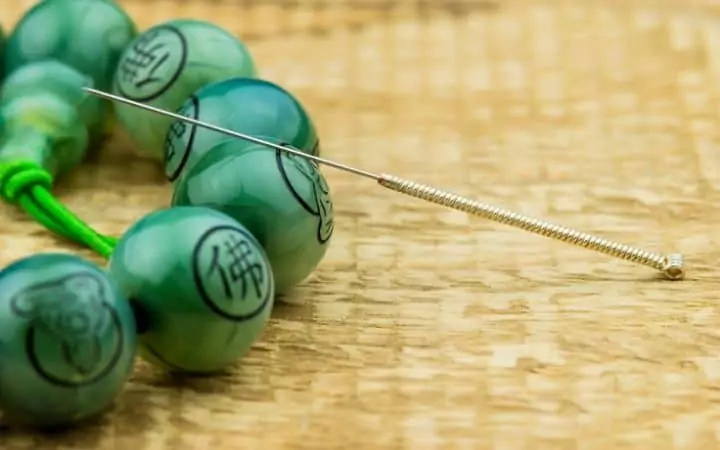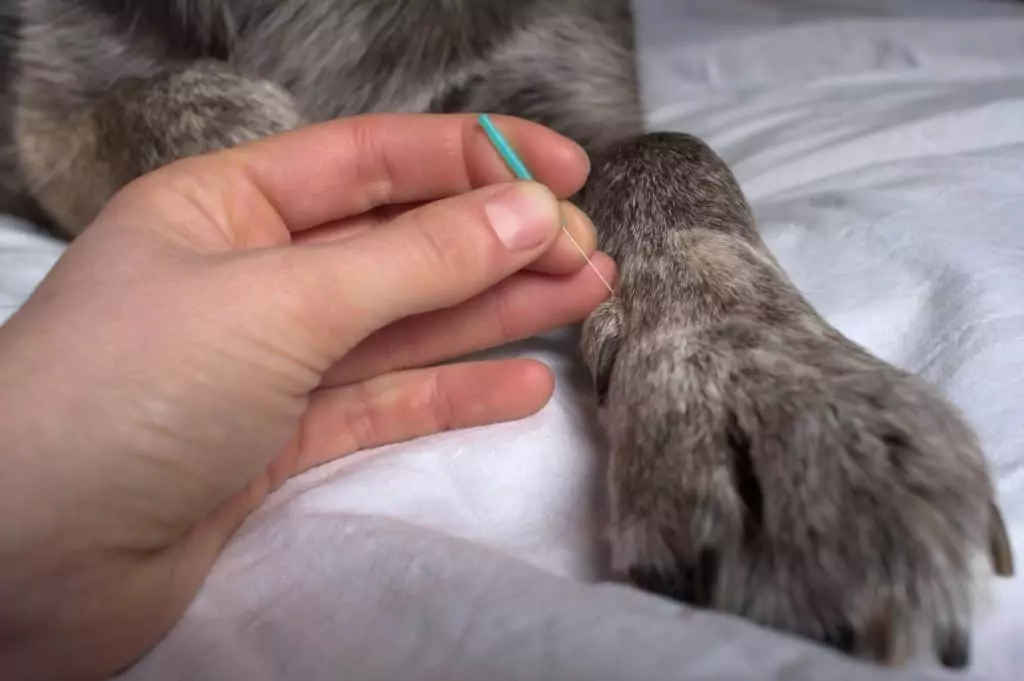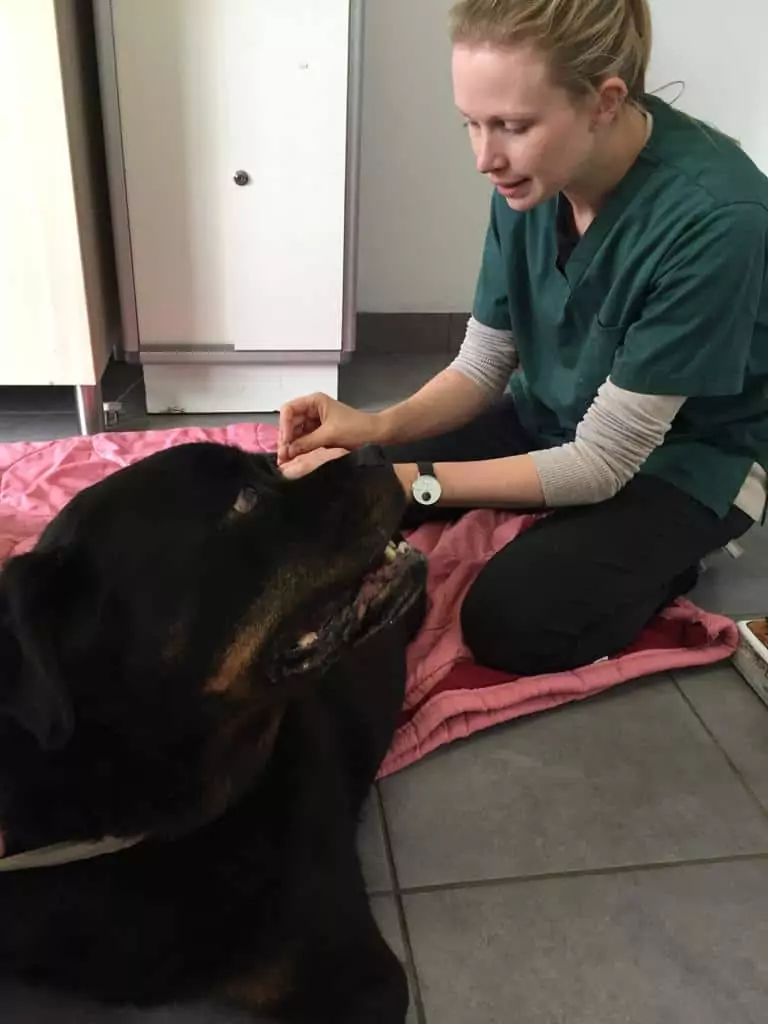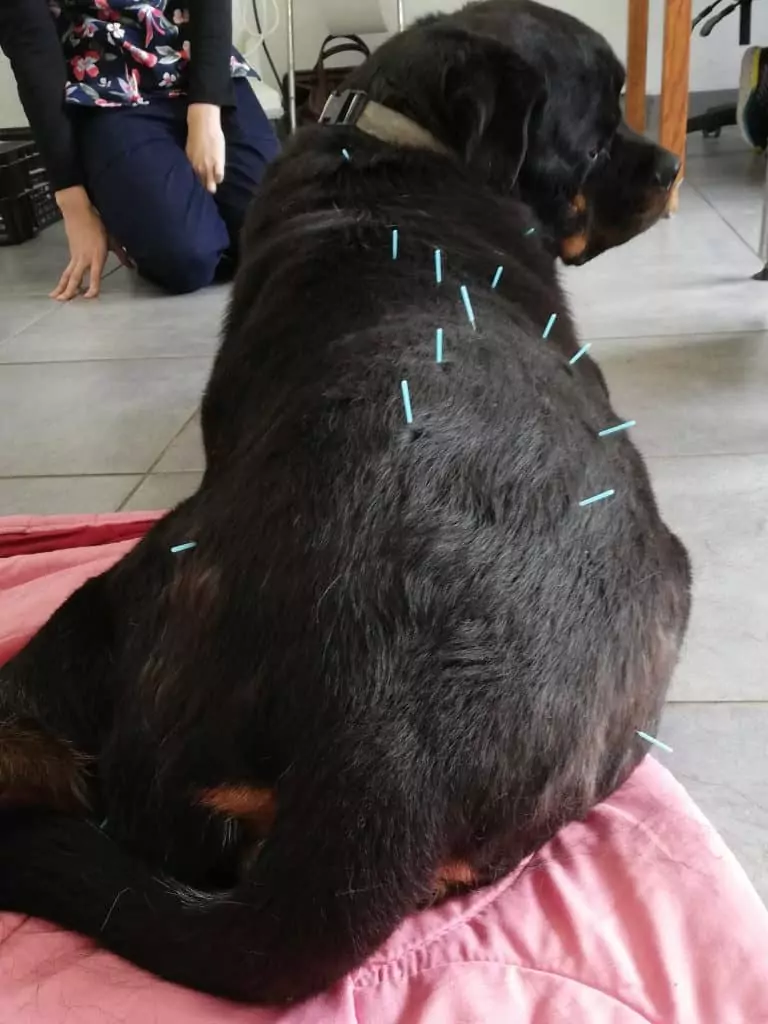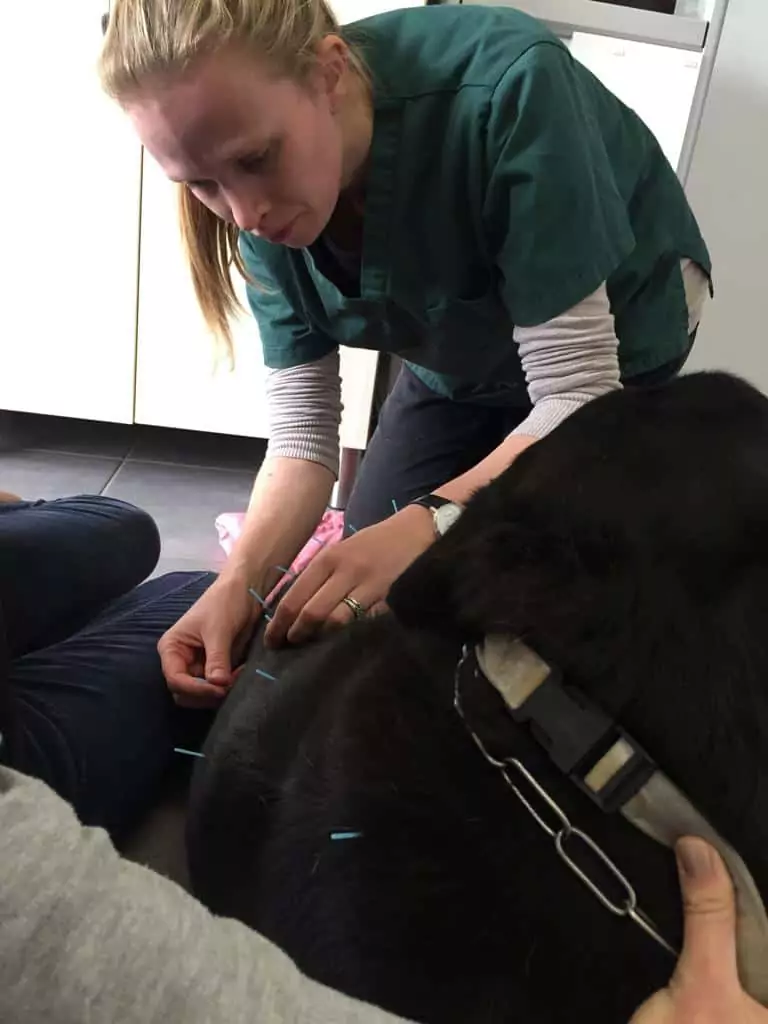Dr. Jo De Klerk specializes in Veterinary Pain Management and Rehabilitation for dogs and horses and she shared with us her knowledge on the subject. The following article is written by her.
Many veterinarians are now recognizing companion animal pain management as a field that requires a multimodal approach, and veterinary acupuncture is frequently becoming part of that. It is no longer suitable to simply prescribe an anti-inflammatory for a painful condition. Medications, weight control, nutritional supplementation, complementary and physical therapies all go hand-in-hand for the most desirable outcome.
However, pet owners are becoming increasingly aware of what they are putting into their beloved animals, and therefore complementary therapies have recently seen a rise in popularity. By tackling pain management with a multimodal approach, the need for medications and their associated side effects, greatly decreases.
Veterinary acupuncture can play a large role in managing an animal’s pain in a multimodal approach, and over the past few decades, it has gradually shifted from an ancient Chinese medicine, to a well understood and credited Western therapy. Many veterinary practices and animal rehab centers now offer animal acupuncture as a therapeutic option to manage pain and discomfort effectively.
History of Western Veterinary Acupuncture
Acupuncture is commonly associated with Traditional Chinese Medicine (TCM) and has been practiced in the East for over 3000 years.
However, there is evidence that it dates back even further. In 1991, the well-preserved remains of a man were found frozen within the ice of a glacier in the Tyrolean Alps. He was thought to be over 5000 years old. He had many tattoos across his body, arranged in groupings. Sixty percent of these groupings were in areas where there are known acupuncture points that relieve the symptoms of spinal and intestinal conditions. When further investigated, it was evident that he had been suffering from ailments in his lower spine and legs, and his guts contained a worm infestation.
The original Chinese philosophy of acupuncture was centralized around a belief that meridians in the body channeled a flow of energy, known as Qi (chi) or vital force. By placing needles in these meridians, the flow of Qi could be altered, which would have therapeutic effects on distant parts of the body.
However, in the late 1900s, there was a surge in research into the scientific mechanism by which acupuncture has its effects. This gave rise to Western Veterinary Acupuncture. The research indicated that acupuncture stimulated a chain of complex neurological pathways that are associated with pain regulation, as well as cause a release of endorphins in the brain.
Finally, scientists, medical practitioners and veterinarians could explain why inserting needles into certain areas of the body resulted in pain relief and relaxation.
How does acupuncture work?
Acupuncture is a therapy that involves inserting needles into two different points; trigger points and acupuncture points.
Trigger points are small focal areas of discomfort which feel like a taut band within a muscle. When pressed, they result in pain and twitch. You are probably familiar with these sorts of sore points in your back or shoulders if someone has ever given you a massage. Trigger points develop due to damage to motor endplates. As a result, the neurotransmitter acetylcholine, leaks out of the end of the nerve, causing a focal point in the muscle to contract. Trigger points can be caused by:
- Acute trauma
- Fatigue or overworking
- Chilling
Acupuncture points are individual points that are associated with bundles of nerves. When a needle is inserted into these points, a signal is transmitted to the dorsal horn of the spinal cord. This is the part of the spinal cord where pain-associated nerves connect, and pain modulation can take place.
Signals are also sent to the brain to trigger a release of endorphins, which are natural pain relief. These endorphins work at the level of the brain, as well as travel to associated segments of the spinal cord, and to the area where the needle was inserted. Endorphins also help to dilate blood vessels, which results in more blood flow to areas that need healing, including trigger points. Finally, they are also excellent at causing relaxation, and due to this, many pets enjoy and feel extremely sleepy during their sessions.
What conditions can acupuncture be used for?
Acupuncture has many applications and is an excellent therapy for:
- Relieving musculoskeletal pain and discomfort, such as arthritis.
- Enhancing healing of wounds and muscle injuries.
- Improving the neurological symptoms of spinal conditions, such as intervertebral disk disease.
- Relieving skin conditions, such as lick granulomas and dermatitis.
- Relieving discomfort from urinary tract conditions, such as cystitis.
In addition to this, acupuncture can be used to treat minor trigger points as a result of fatigue or overwork in sporting animals, such as agility dogs. Many top animal athletes have acupuncture added to their routine to keep them in the best physical condition. There’s nothing like a few endorphins to give you the edge!
Is acupuncture painful for the animals?
Many people who haven’t tried it, assume acupuncture is painful, since needles penetrate the skin. However, a technique is used to tap the needles through the skin which prevents sensory nerves from registering sharp pain. In addition to this, acupuncture needles are less than one-quarter of the diameter of a needle used for injection, which makes their insertion less painful than most people anticipate.
However, acupuncture is not completely sensation-free. The feeling differs from individual to individual, but usually results in a sensation of deep aching, pressure, swelling or numbness, however it is rarely unpleasant for you or the pets.
How often must a pet have acupuncture?
Acupuncture treatment usually requires several sessions to be effective. For most ailments, these sessions can be at gaps with increasing intervals. For example, the first gap is usually three days, then seven days, then two weeks, until a maintenance interval is determined.
Most pets will end up needing to be seen every three to six months. However, those with more chronic or severe ailments might need to be seen on an ongoing basis every month.
Because of repeated visits, the cost of acupuncture has to be considered. However, the savings in medications from implementing acupuncture can go towards the cost, and most owners feel the benefits make it worth investing in. Many pet insurance companies now cover acupuncture as well.
What are the side effects of acupuncture?
When administered properly, acupuncture is one of the safest forms of therapy. The side effects are rare, however, there are still some to watch out for.
Sometimes when a needle is inserted into an area that is tender, the muscle may spasm. This can cause the needle to become stuck, and increases the chances of a small capillary ooze of blood after removal of the needle. But there’s nothing to stress about, as did you know that if you insert a needle right next to the original needle, it comes out with ease?
Another common side effect is sedation, due to the endorphins. This is not a bad side effect, and helps the pet to relax and rest. The majority of patients acupunctured will feel sleepy during or after the session and may seem lethargic for the remainder of the day. So, don’t be scared if your pet is relaxed and doesn’t want to play with you for the rest of the day.
Who can administer acupuncture?
Veterinary acupuncture should only be administered by a veterinarian with formal training in the therapy. Animals have significantly different anatomy to humans, and therefore if the acupuncture is performed incorrectly by a lay-person, it will not be beneficial, and may even be detrimental to the animal. Some veterinarians practice acupuncture from veterinary clinics, whereas others work from animal rehabilitation centers.
In most countries and states, veterinary acupuncture can legally only be performed by a veterinarian, as the insertion of a needle is considered veterinary surgery. In addition to this, acupuncture should only be performed with an official diagnosis by a veterinarian, and therefore if a lay-person was to acupuncture a pet, they would not have the sufficient background to ensure its effectiveness.
If you are wondering how to become an acupuncturist, the Western Veterinary Acupuncture group has trained more than 1,200 vets from the UK, Europe, the United States and Russia. The International Veterinary Acupuncture Society also has an acupuncture training course available, however this is based on TCM principles.
Summary
Acupuncture is becoming increasingly accepted as conventional therapy in Western medicine, and this is helped by a greater understanding of the scientific principles behind it. It can be an extremely helpful therapy to aid in the multimodal approach of managing companion animal pain, and its application significantly reduces the need for medications, thereby extending the quality and quantity of a pet’s life.

